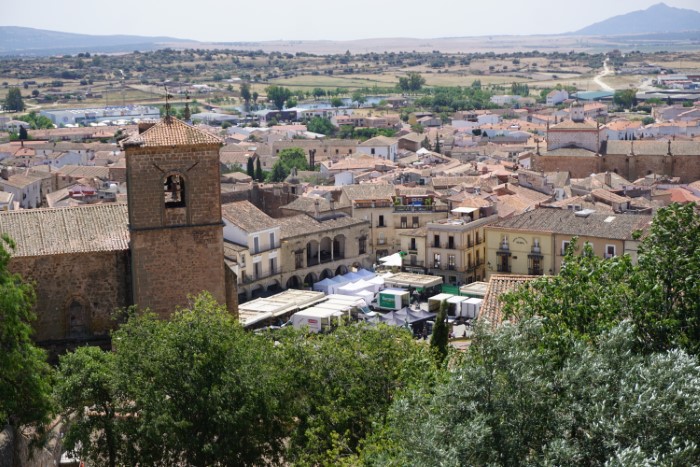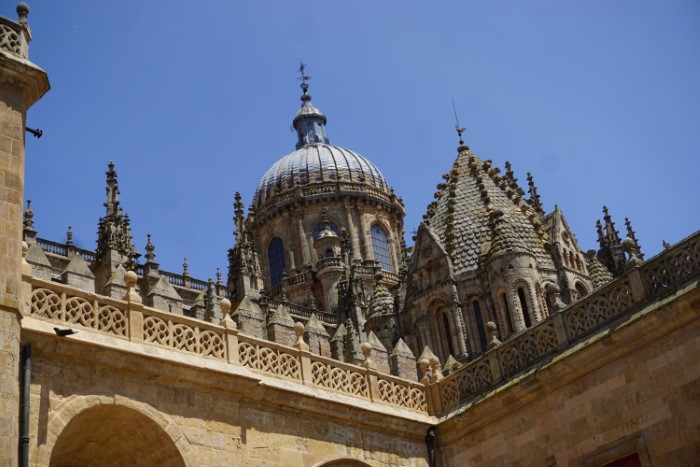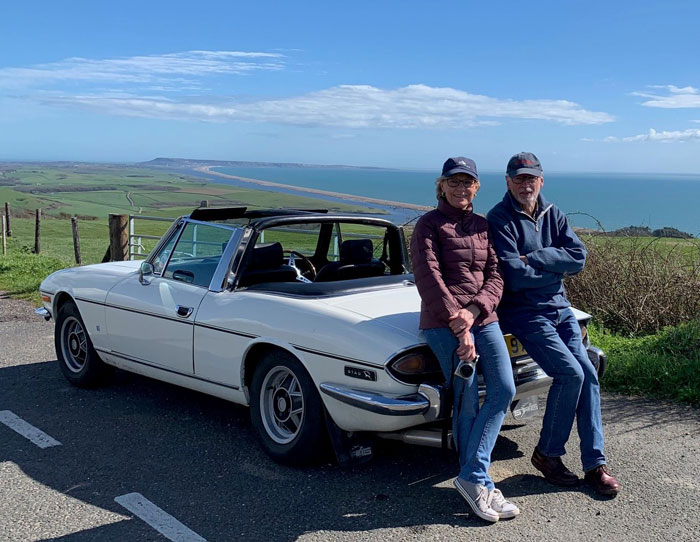With about eight days of our holiday still ahead of us we decided to start heading up towards Spain’s north coast with the hope that we’d be able to enjoy a few days at the seaside before our return ferry from Bilbao.
Although it would mean crossing our earlier track we decided to return to Salamanca to visit the Museo de Historia de la Automocion de Salamanca, which we’d somehow managed to miss on our earlier visit – despite having cycled literally past its front door. We stayed a night at a camperstop about 30km short of Salamanca at the tiny hamlet of Narros del Castilla which didn’t have much to recommend it other than some nice views and some huge falling-down walls which presumably meant that once upon a time it was a place of some significance.
Despite having a couple of MGs in its collection and not a Triumph to its name the museum was worth a visit, with a wide variety of marques on display, including a couple of Spanish makes that I’d never heard of. A small worthless prize to anyone who can name three Spanish makes not including Seat (without using Google!).
 No, not a Triumph – but nice just the same
No, not a Triumph – but nice just the sameFrom Salamanca we headed north again to Zamora, very nearly coming to grief on the way. We were in a line of traffic plodding along nicely at about 50mph when the Stig’s Spanish cousin coming in the opposite direction decided to cross a solid white line to do some overtaking. I think that I must have just had time to swerve slightly to the right before there was a massive, expensive-sounding bang – and he was gone. I couldn’t stop immediately but pulled over about a mile down the road and was followed into a layby by a Spanish guy in a white van. According to him, the other driver’s left-hand door mirror hit the side of our van, flew through the air and landed on his windscreen. Fortunately the only damage to our van is a broken flue cover from the hot water heater. If his car had been a couple of mm closer there would have been a long scrape down the side of our vehicle; a couple of inches further over and it would have been ’emotional’.



























